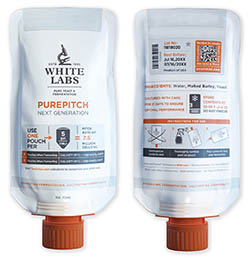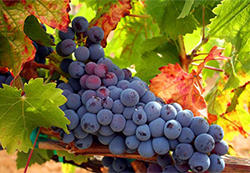Will Malolactic Fermentation Improve my Wine?
Posted by Matteo Lahm on 17th Sep 2024
Today, we're delving into the intriguing process of malolactic fermentation (MLF.) It can be a key player in the winemaking process, but there are instances where it should be avoided. Since it is harvest season, and you are getting ready to make your new batches, this is a good time to clarify what it is, and whether or not it is right for your wine.
Malolactic fermentation is a secondary fermentation process that involves the conversion of malic acid, a tart and sharp acid, into lactic acid, a softer and creamier acid. This transformation is carried out by specific bacteria, primarily Oenococcus oeni, and is often initiated using malolactic cultures.
What is probably most important to understand is what MLF does because its impact on wine is significant. Wines that have undergone this process typically have a 0.2% to 0.4% decrease in total acidity and a 0.2 to 0.3 increase in pH. The result is a softer, more rounded wine. While the fruitiness of the wine may be slightly reduced, the complexity is enhanced, providing a more nuanced flavor profile.
To understand these numbers, let’s put them in context. If your wine starts with a 3.5 pH, your pH could increase to a 3.75 after MLF. That is a significant change that will affect more than just your flavor profile. 3.6 is the maximum pH to ensure the effectiveness of sulfites. Remember, the higher the pH, the lower the acidity. Therefore, if you are making a dry red and you want to implement MLF, you must consider your starting pH and make any necessary changes to preserve body and prevent spoilage.
Essentially, MLF is not universally beneficial for all types of wine. It's particularly desirable for dry red wines and certain dry white wines, such as Chardonnay and Viognier. These wines benefit from the added complexity and softer acidity that MLF provides. On the other hand, wines that are prized for their fruit-forward character, such as Riesling or Gewurztraminer, or sweet wines, generally do not undergo MLF as it can diminish their characteristic fruitiness.
For wines with high acidity, MLF can be a useful tool to bring the acid levels down to a more balanced range. Additionally, MLF can contribute to the biological stability of the wine, reducing the risk of spoilage and off-flavors. However, it's important to note that if MLF is encouraged, additives like potassium sorbate should not be added until the MLF is complete, as these can inhibit the process.
Even wines with low acidity can benefit from MLF, as it can add a layer of complexity to the flavor profile. However, in these cases, increasing acidity may be necessary to maintain balance in the wine and ensure its longevity as it ages. Lower acid wines are more prone to bacterial infection and spoilage.
So when should you do MLF? While MLF can occur spontaneously, this is not always desirable as it can lead to unpredictable results and potential off-flavors, particularly in wines with a higher pH. For this reason, the use of a malolactic culture is recommended to ensure a controlled and successful MLF.
What would cause spontaneous MLF? If you have used it in prior batches and do not have separate equipment. Once MLF bacteria is present in your fermenter, hoses or auto siphon, it is almost impossible to eradicate. Also, allowing it to happen spontaneously can just be bad timing. MLF bacteria grows slowly and if you are not using sulfites and bottling quickly, it could start when your wine is in the bottle. Since MLF produces CO2, use your imagination to visualize a shooting gallery in your wine cellar. You should introduce a fresh culture at the right time to get the results you want.
The timing of when to add the malolactic culture can vary. Some winemakers prefer to add it towards the end or after the primary yeast fermentation, while others favor co-inoculation, where the yeast fermentation and MLF are conducted simultaneously.
To encourage MLF, certain conditions should be met.
MLF is inhibited when free SO2 levels are above 20 ppm, the temperature is below 60° F, or the pH is below 3.20. The wine should also not exceed 77° F, as this can be detrimental to the bacteria. Therefore, you must consider a number of things to determine when you should introduce your MLF culture.
If you are using sulfites to purge wild yeast prior to using cultured yeast to ferment, co-inoculation is not for you. The typical dose of sulfites for this step is 50 ppm, more than double the threshold. The ppm of sulfites can reduce by half in a matter of weeks so in this instance, it is best to initiate MLF towards the end of fermentation or after it is complete.
Then you must consider your internal fermentation temperatures. Even if you are working with spontaneous fermentation, if the temperature exceeds the 77 degree F temperature threshold, it will inhibit bacterial growth. If your wine cellar is too cold, that could also be a problem. It is important for you to consider all these factors before proceeding with MLF. If conditions are optimal, MLF typically takes about 4 weeks to complete.
Before bottling or making further adjustments to the wine, it's important to confirm that MLF is in fact complete. This can be done using paper chromatography, a method that allows winemakers to track the progression of MLF. If you do not have this equipment, it is safe to allow your wine to bulk age a bit before bottling. MLF makes very small bubbles that are visible at the top of your vessel. If it is still bubbling, MLF is still in action.
In conclusion, MLF is a valuable tool in winemaking, but not one you will always want to use. While it plays a vital role in contributing to the complexity and stability of many beloved wine styles, it is detrimental in others. It is paramount that you consider what kind of wine you are making. It is also important to allow your tastebuds to have a say in your decision about implementing MLF. You might be making a dry red but if it has a strong fruit forward flavor that you enjoy, you might not want to do it. This is especially the case with lower alcohol wines. MLF can add a velvety buttery texture to a big body red, but it might zap the crispness from a light body one. While this article can serve as a guide, ultimately it comes down to what you like. Cheers!



